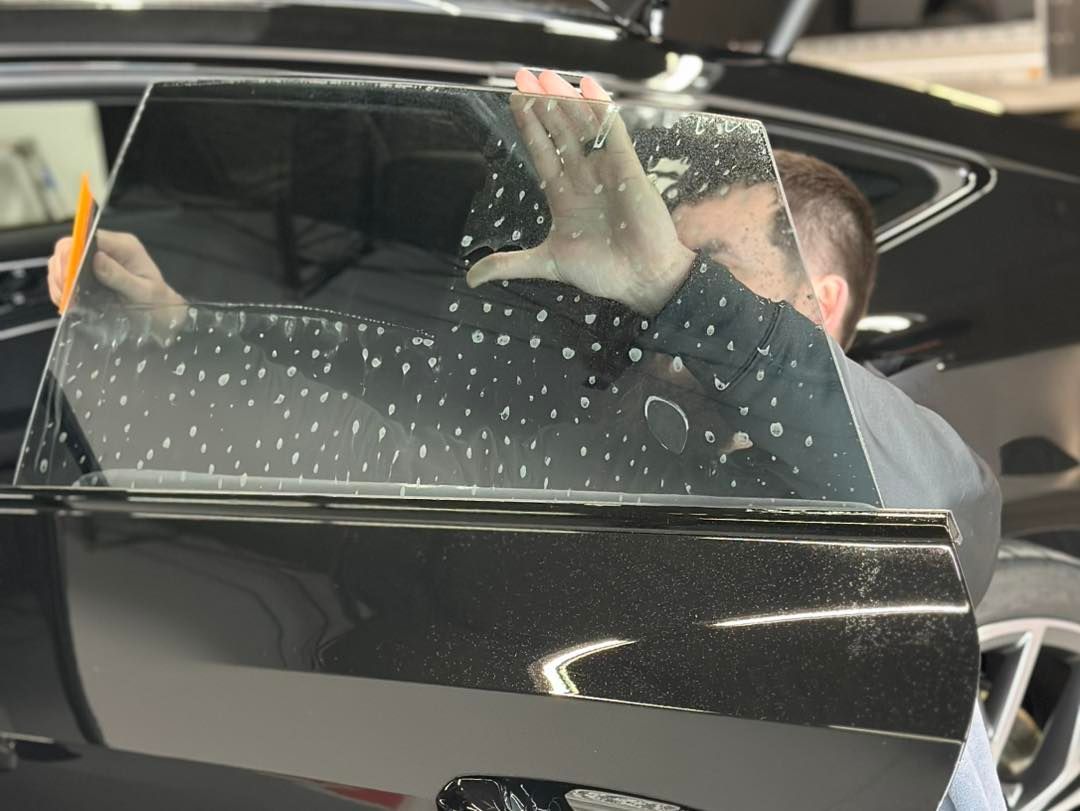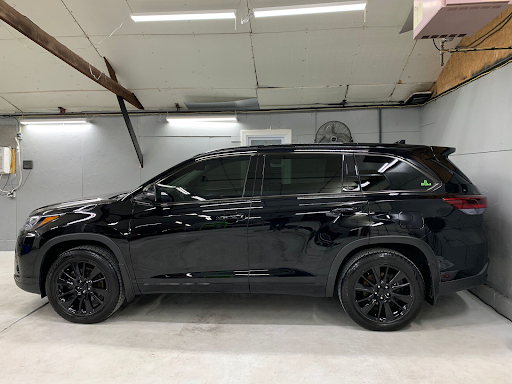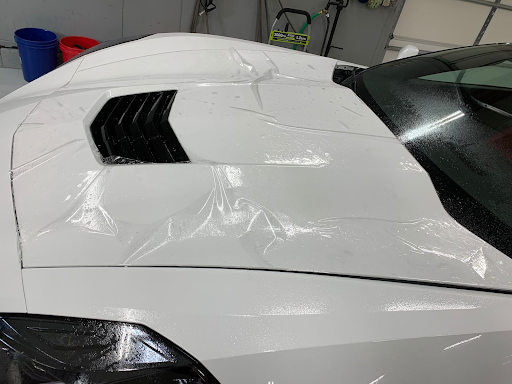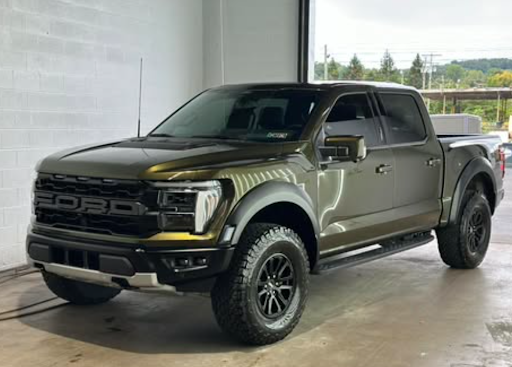Window tinting has become one of the most popular choices for car owners looking to enhance the appearance of their vehicles, improve comfort, and protect the interior from harmful UV rays. Whether it’s a luxury vehicle, a high-performance car, or a daily driver, tinted windows offer a sleek, modern look while also providing privacy and reducing glare. However, like anything exposed to the elements, window tint can experience issues over time, especially if it wasn’t applied correctly or has aged. One of the most common problems is the development of bubbles or peeling in the film.
While it may seem like a minor issue at first, tint bubbles and peeling can diminish the aesthetic appeal of your vehicle and reduce the effectiveness of the tint. Fortunately, with the right knowledge and tools, you can fix these issues and restore your tint to its original state. In this blog, we’ll guide you through the causes of tint bubbles and peeling, how to fix them, and when it’s best to call in the professionals for help. Whether you’ve noticed small bubbles or significant peeling, we’ve got you covered with practical solutions that will keep your windows looking sharp and your vehicle well-protected.
Let’s dive into the common causes of window tint problems and how you can solve them.
What Causes Window Tint Bubbles and Peeling?
Before jumping into solutions, it’s essential to understand the common causes of tint bubbles or peeling. Here are some of the main culprits:
- Poor Installation
One of the most common reasons for window tint issues is improper installation. If the tint film is not applied correctly, it can lead to bubbles, peeling, or even premature wear. Professional installers follow specific steps to ensure that the tint adheres smoothly to your windows. Any air bubbles or debris trapped beneath the film can prevent it from adhering properly, leading to peeling over time. - Excessive Heat
Tint can sometimes start to peel or bubble due to extreme heat. In hot climates or when your car is exposed to prolonged periods of direct sunlight, the tint film may expand and contract. This constant fluctuation can cause the adhesive to lose its bond with the glass, resulting in bubbles or peeling along the edges. - Moisture Exposure
Moisture can also affect the integrity of window tint. If you use a car wash with high-pressure water or if the tint is exposed to humidity or rain shortly after installation, moisture may seep behind the film. This moisture can weaken the adhesive, leading to bubbles and peeling. For best results, always wait for the recommended drying time before rolling down your windows after tinting. - Low-Quality Tint Film
Not all window tints are created equal. Cheaper tints or those that aren’t UV-resistant may break down faster, leading to bubbling and peeling. High-quality tint films are designed to last longer and resist these issues, ensuring that your vehicle looks great for years to come. - Aging Tint
Over time, window tint can naturally degrade, especially if it hasn’t been cared for properly. Exposure to UV rays, frequent washing, and even just the passage of time can cause the tint film to peel away from the glass. If your tint is old and starting to show signs of wear, it may be time to replace it.
How to Fix Window Tint Bubbles
Fixing window tint bubbles depends on the severity of the problem. Here are a few steps to repair minor bubbles:
- Heat the Tint
If the bubbles are small, you can try to heat the area using a hairdryer or a heat gun. Gently apply heat to the tinted area for 30 seconds to 1 minute. This will soften the adhesive and make it easier for the film to adhere to the glass again. Be cautious when using a heat gun, as excessive heat can damage the tint or the window. - Use a Squeegee
After heating, use a plastic squeegee to gently press the bubble toward the edges of the tint. Move from the center of the bubble outwards, applying light pressure. This helps push any air pockets or moisture out from behind the tint. - Cut Out the Bubbles
If the bubbles are still persistent, you may need to carefully puncture the bubble with a pin or needle. This will release the trapped air or moisture. After puncturing, use the squeegee to flatten the film. This method should be used with caution, as you may inadvertently damage the tint film. - Allow the Tint to Dry
After removing the bubbles, allow the tint to dry completely. Avoid rolling down your windows for a few days to ensure the adhesive sets properly.

How to Fix Peeling Window Tint
Peeling window tint is a more severe problem, and it may require different treatment. Here’s what you can do:
- Remove the Peeling Tint
If the tint is peeling significantly, the best option may be to remove the entire film. Start by using a heat gun or hairdryer to loosen the tint. Apply heat to the film to soften the adhesive and gently peel off the tint. Be sure to go slowly to avoid damaging the window or leaving adhesive residue behind. - Clean the Residue
After removing the tint, there will likely be adhesive residue left on the window. Use a mild solvent, such as rubbing alcohol or a commercial adhesive remover, to clean the glass. Use a cloth or sponge to gently scrub the residue until the glass is clear. Be sure to follow up with a glass cleaner to remove any leftover solvent. - Reapply New Tint
Once you’ve removed the old tint and cleaned the window, you can apply a new tint if desired. If you’re unsure about reapplying the tint yourself, it’s best to consult a professional to ensure that the job is done right.
When to Seek Professional Help
While minor tint issues can often be fixed at home, there are times when it’s best to seek professional help. If your tint is badly damaged, or if you’re unsure of how to proceed, it’s always a good idea to visit a trusted auto detailer. Professionals at
Prestige Auto Spa have the expertise to handle all types of window tinting issues, from minor repairs to full replacement.
Here are some scenarios where professional help is recommended:
- If your tint is severely peeling or bubbling
- If you’ve tried DIY fixes but haven’t had success
- If you want to replace old or damaged tint with new, high-quality film
- If you need expert advice on the best tint for your vehicle and climate
At Prestige Auto Spa, we specialize in top-quality window tinting and offer expert repair services to restore your vehicle’s appearance. If you're dealing with tint issues, give us a call at (717) 900-4527 for a consultation today!
Why Choose Prestige Auto Spa?
When it comes to vehicle care, don’t settle for less. Prestige Auto Spa offers expert window tinting services with high-quality films that will keep your car protected and looking its best. Our experienced team ensures that your tint is applied correctly, preventing issues like bubbles or peeling from happening in the first place. We also offer tint repairs and replacements for when those issues arise. Choose Prestige Auto Spa for reliable, professional window tinting services that last.
Frequently Asked Questions
- Why is my window tint bubbling?
Window tint bubbles are often caused by poor installation, excessive heat, moisture exposure, or low-quality film. Proper care and professional installation can prevent this issue. - Can I fix window tint bubbles myself?
Yes, small bubbles can often be fixed by heating the tint and using a squeegee to press the air out. For larger bubbles, you may need to puncture the bubble to release the trapped air. - How do I fix the peeling window tint?
Peeling tint can be removed by carefully heating the film, peeling it off, and cleaning any adhesive residue. You may need to apply a new tint if the peeling is significant. - How long does window tint last before it starts peeling?
High-quality window tint typically lasts 5-10 years, but exposure to harsh weather or improper installation can shorten its lifespan. - Is professional tinting worth the investment?
Yes, professional window tinting ensures that your tint is applied correctly, reducing the risk of bubbling, peeling, and other issues. It also ensures that you get a long-lasting, high-quality product.




